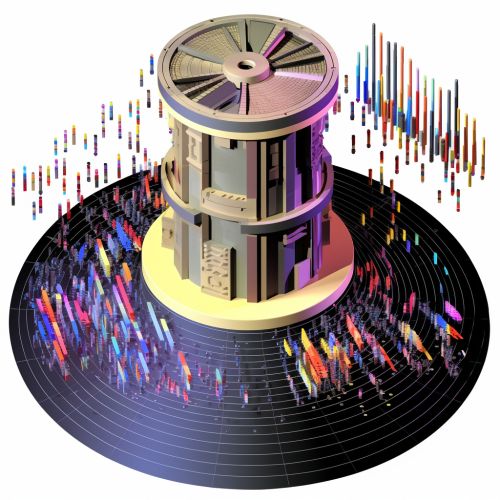Data Assimilation
Introduction
Data assimilation is the process by which observations and a numerical model are combined to estimate the state of a physical system. This process is widely used in meteorology, oceanography, hydrology, and other scientific disciplines to improve the accuracy of numerical predictions.
Overview
Data assimilation techniques are used to incorporate observational data into numerical models to improve their accuracy. These techniques are particularly important in fields such as meteorology and oceanography, where accurate predictions are crucial for a variety of applications, from weather forecasting to climate modeling.


Theoretical Background
Data assimilation is based on the principles of Bayesian statistics, which provides a mathematical framework for updating a priori knowledge with new information. In the context of data assimilation, the a priori knowledge is the numerical model, and the new information is the observational data.
Bayesian Framework
The Bayesian framework for data assimilation involves the calculation of a posterior probability distribution, which represents the updated state of the system given the observational data and the numerical model. This is achieved through the application of Bayes' theorem, which states that the posterior probability is proportional to the product of the prior probability (the numerical model) and the likelihood function (the observational data).
Error Covariance Matrices
In the Bayesian framework, the uncertainties in the numerical model and the observational data are represented by error covariance matrices. These matrices quantify the uncertainties in the model and the data, and play a crucial role in the data assimilation process. The model error covariance matrix represents the uncertainties in the model predictions, while the observation error covariance matrix represents the uncertainties in the observational data.
Methods of Data Assimilation
There are several methods of data assimilation, each with its own strengths and weaknesses. These methods can be broadly classified into two categories: sequential methods and variational methods.
Sequential Methods
Sequential methods, such as the Kalman filter, update the state of the system at each time step as new observations become available. These methods are computationally efficient and can handle non-linear models and non-Gaussian errors, but they require the storage of the error covariance matrix, which can be computationally expensive for large systems.
Variational Methods
Variational methods, such as 4D-Var and 3D-Var, minimize a cost function that measures the discrepancy between the model predictions and the observational data over a certain time window. These methods can handle large systems and do not require the storage of the error covariance matrix, but they are computationally expensive and require the calculation of the model's adjoint.
Applications of Data Assimilation
Data assimilation techniques are used in a wide range of scientific disciplines to improve the accuracy of numerical predictions.
Meteorology
In meteorology, data assimilation is used to improve the accuracy of weather forecasts by incorporating observational data from satellites, weather balloons, and other sources into numerical weather prediction models.
Oceanography
In oceanography, data assimilation is used to estimate the state of the ocean, including temperature, salinity, and current velocities, by combining observational data from satellites and buoys with numerical ocean models.
Hydrology
In hydrology, data assimilation is used to improve the accuracy of hydrological models by incorporating observational data on precipitation, temperature, and other variables.
Future Directions
The field of data assimilation is continually evolving, with ongoing research aimed at developing more accurate and efficient data assimilation techniques. Key areas of research include the development of ensemble methods, which use a collection of model runs to represent the uncertainty in the model predictions, and the incorporation of machine learning techniques, which can potentially improve the efficiency and accuracy of data assimilation methods.
